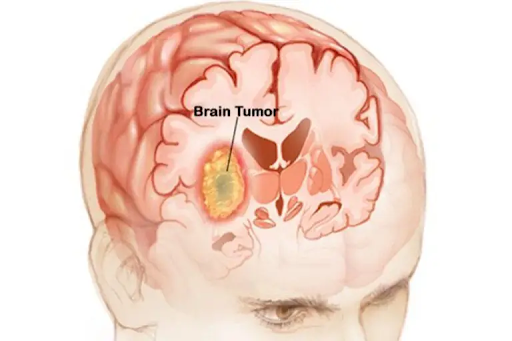Brain tumor surgery is one of the most advanced and delicate procedures in neurosurgery. It involves removing abnormal growths from the brain while carefully preserving vital functions such as speech, memory, motor control, and vision. Because the brain controls every aspect of human life, brain tumor surgery demands a highly skilled neurosurgical team, advanced technology, and a personalized treatment approach.
Brain tumors may be benign (non-cancerous) or malignant (cancerous), and treatment plans differ based on their type, size, location, and growth rate. Surgery is often the first and most important step, especially when the tumor is accessible and operable. This article explains the different treatment options for brain tumor surgery, associated risks, recovery expectations, and outcomes. It also touches on the growing demand for affordable care and the Brain Tumor Surgery Cost in India, which attracts patients globally.
Understanding Brain Tumor Surgery
The main goal of brain tumor surgery is to:
- Remove as much of the tumor as safely possible
- Relieve pressure on the brain
- Reduce symptoms such as headaches, seizures, or neurological deficits
- Provide a tissue sample for diagnosis
- Improve the effectiveness of follow-up treatments like radiation or chemotherapy
Thanks to modern technology like MRI-guided navigation, neuro-monitoring, and minimally invasive techniques, outcomes have significantly improved over the last decade.
Treatment Options for Brain Tumor Surgery
1. Craniotomy
A craniotomy is the most common type of brain tumor surgery. During this procedure, the neurosurgeon temporarily removes a part of the skull to access and remove the tumor. Advanced tools like surgical microscopes and neuronavigation systems help in accurate tumor removal.
Types of craniotomy:
- Traditional craniotomy
- Keyhole craniotomy
- Endoscopic-assisted craniotomy
- Awake craniotomy (explained below)
Craniotomy allows surgeons to remove large or deep-seated tumors with precision.
2. Awake Brain Surgery (Awake Craniotomy)
Awake brain surgery is used when the tumor is near areas that control speech, movement, or vision. The patient is kept awake during part of the procedure to respond to commands. This helps surgeons ensure these crucial functions are not damaged.
Best suited for tumors near:
- Speech centers
- Motor cortex
- Vision pathways
This approach significantly reduces complications and improves functional outcomes.
3. Endoscopic Brain Tumor Surgery
This is a minimally invasive surgery performed using a small camera (endoscope) inserted through a tiny hole in the skull or through the nose (endonasal approach). It is commonly used for:
- Pituitary tumors
- Skull base tumors
- Colloid cysts
- Other midline tumors
Benefits include less pain, smaller incisions, shorter hospital stay, and faster recovery.
4. Stereotactic Radiosurgery (Non-Surgical Option)
Although not technically “surgery,” stereotactic radiosurgery is an important treatment option for patients who cannot undergo traditional surgery. Techniques like Gamma Knife, CyberKnife, and LINAC-based radiosurgery deliver focused radiation to destroy tumor cells without cutting into the skull.
Best suited for:
- Small tumors
- Inoperable tumors
- Metastatic brain tumors
5. Laser Ablation Surgery
Laser interstitial thermal therapy (LITT) uses laser heat to kill cancer cells. It’s suitable for small, deep tumors that are difficult to access via traditional surgery. Guided by MRI, it is precise and minimally invasive.
Risks Involved in Brain Tumor Surgery
Brain tumor surgery is highly safe when performed by experienced neurosurgeons, but like all major procedures, it carries some risks. The types of risks depend on the tumor’s location and complexity.
Common Risks Include:
- Bleeding inside the brain
- Infection
- Swelling of the brain (edema)
- Seizures
- Memory or speech difficulties
- Weakness in limbs
- Vision or hearing problems
Modern surgical planning, robotics, imaging, and neuro-monitoring have significantly reduced complication rates. Many side effects are temporary and improve as the brain heals.
Recovery and Rehabilitation
Recovery from brain tumor surgery varies for each patient. Many people experience gradual improvement in neurological functions over days or weeks. You may require:
- Physiotherapy
- Speech therapy
- Occupational therapy
- Psychological support
Most patients return to normal daily activities within 4–12 weeks depending on the complexity of the surgery.
Follow-up treatments such as radiation or chemotherapy may be recommended based on tumor type and pathology reports.
Expected Outcomes After Brain Tumor Surgery
Surgical outcomes depend on:
- How much of the tumor can be safely removed
- Whether the tumor is benign or malignant
- The patient’s age and overall health
- Location of the tumor
- Response to follow-up treatments
In many cases, complete removal leads to excellent long-term outcomes. Even partial removal can significantly reduce symptoms and improve survival rates when combined with radiation or chemotherapy.
Brain Tumor Surgery Cost in India
India is globally recognized for offering high-quality neurosurgical care at affordable prices. The Brain Tumor Surgery Cost in India varies depending on:
- Type of surgery (craniotomy, endoscopic, awake surgery, etc.)
- City and hospital
- Neurosurgeon’s experience
- Type of tumor
- ICU stay and post-operative care
- Need for follow-up treatments
On average, brain tumor surgery in India costs a fraction of what it does in Western countries, making it a preferred destination for international patients seeking world-class treatment at reasonable rates.
Conclusion
Brain tumor surgery has advanced tremendously, offering patients safer procedures, faster recovery, and better outcomes than ever before. With multiple treatment options—ranging from traditional craniotomy to minimally invasive endoscopic surgery and radiosurgery—patients today have access to highly effective solutions tailored to their condition.















